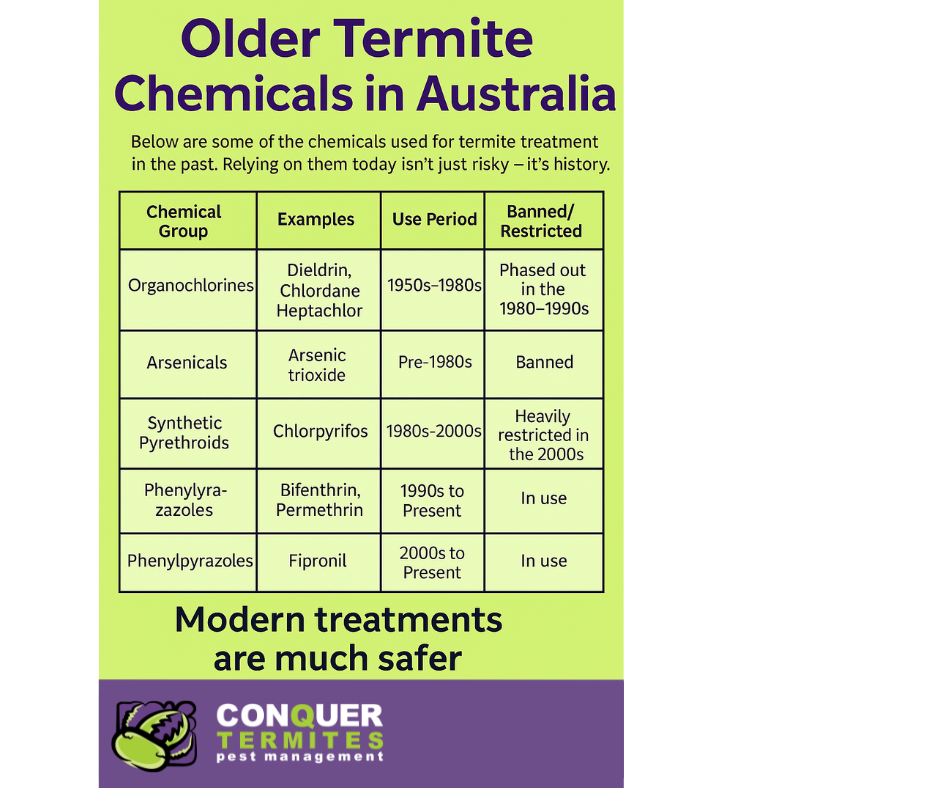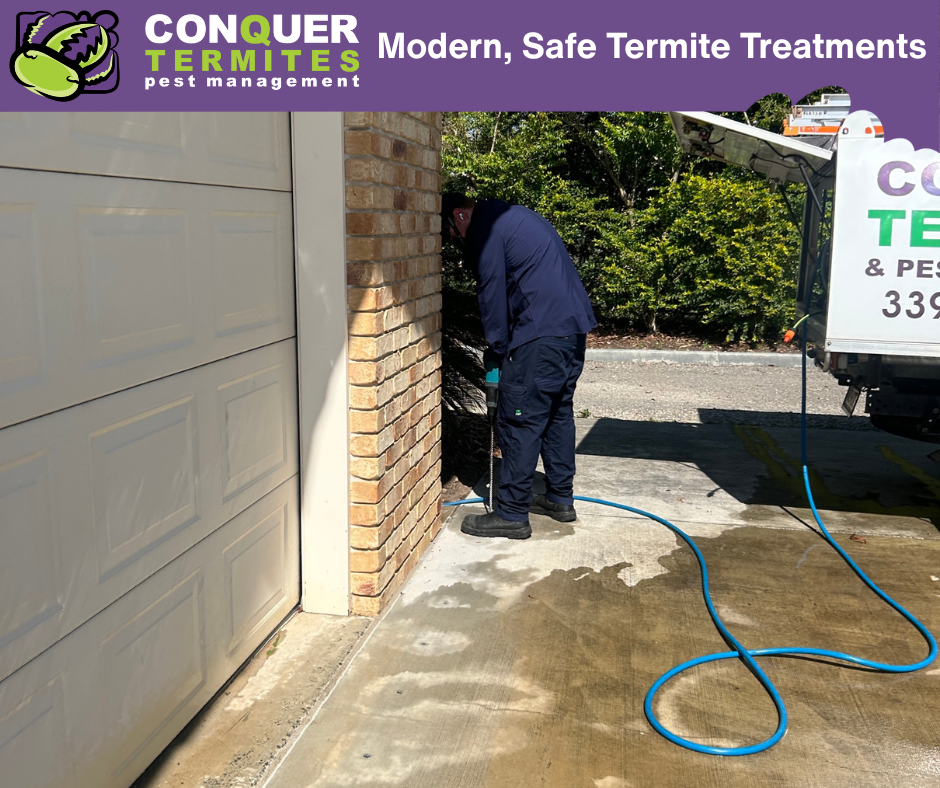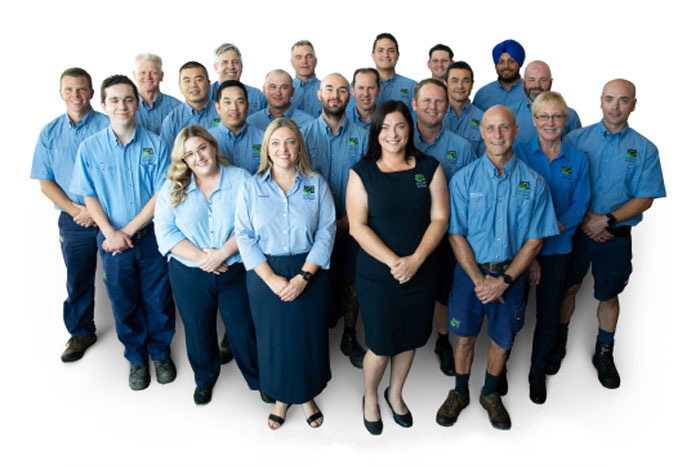Do you think your home is still protected from termites because it was treated decades ago with chemicals like arsenic or dieldrin? You might want to think again.
Many Brisbane homeowners — especially those in homes built before the 1990s — believe their house is “termite-proof” because it was treated with strong soil chemicals during construction. These older treatments were once considered effective, but times have changed. The harsh truth? That protection is probably long gone.
Let’s bust this myth wide open.
The Old Chemicals: What Were They?
In the 1960s to 1980s, popular termite control chemicals in Australia included:
- Arsenic trioxide
- Organochlorines like dieldrin, chlordane, and heptachlor
These were long-lasting, persistent in soil, and known for killing termites on contact. That’s why many older generations still swear by them.

Why They Were Banned in Australia
While effective, these chemicals posed serious environmental and health risks. They leached into soil, contaminated groundwater, and were toxic to humans, pets, and wildlife. The Australian Government began phasing them out in the 1980s, with full bans enforced by the 1990s.
For example:
- Chlordane and heptachlor were banned for pest control use in Australia by 1997
- Dieldrin use was phased out even earlier due to environmental persistence and health concerns
- Arsenic trioxide is no longer used in termite management due to its high toxicity
Here’s the Catch: Even These Chemicals Don’t Last Forever
Even the strongest soil-applied termiticides degrade over time — especially in Brisbane’s warm, wet conditions. While some organochlorines were claimed to last 20+ years, their real-world longevity was much lower.
Factors that speed up breakdown include:
- Soil movement or disturbance (e.g. renovations, landscaping)
- Flooding or heavy rain
- UV exposure at edges
- Soil pH and microbial activity
If your home was treated 30 or 40 years ago, that chemical is either:
- No longer present
- Too degraded to stop termites
- Compromised due to garden beds, paving, or poor installation
Why We Still Find Termite Damage in Homes Treated with the “Good Stuff”
At Conquer Termites, we regularly inspect homes built in the 1970s and 80s where the owners say, “We had the good stuff put in — we’re safe.” Yet, we often find:
- Active termite damage
- Evidence that termites have bridged or bypassed the old treatment
- No signs of remaining chemical in the soil
Just because it worked once doesn’t mean it still does.
What Can You Do Instead?
If you live in an older Brisbane home, it’s important to:
- Book a professional termite inspection every 12 months
- Install a modern termite management system if none is in place
- Avoid assuming old treatments are still active
Today’s termiticides (like Fipronil and Bifenthrin) are safe, targeted, and effective when applied correctly. They don’t last forever either — but we can monitor and retreat as needed.

Final Word: Peace of Mind Comes from the Present, Not the Past
Relying on a chemical that went into the ground 40 years ago is like relying on a 40-year-old fire extinguisher — it might have worked back then, but it’s not what’s keeping you safe today.
Worried your old treatment has worn off?
Book a termite inspection with Conquer Termites and stay ahead of the threat.
Call us Now on 1300 417 007
more information:
https://www.apvma.gov.au/resources/chemicals-news/chlorpyrifos




